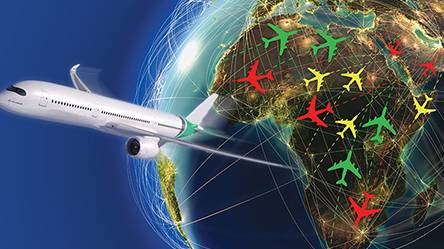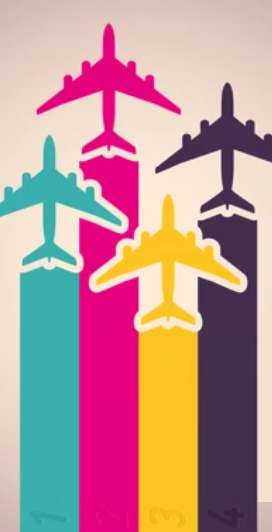Gulf Voice of Aviation
Africa Aviation Potential
In 2018, Africa accounted for 2.8% of total global Revenue Passenger Kilometres (RPK), and yet its population makes up 16.72% of the world’s people. The African aviation market remains underdeveloped, despite having incredible potential. By 2037, it is expected to grow at a CAGR of 4.6%, making it the second-fastest-growing continent, only 0.2% shy of the expected growth of the Asia-Pacific region. To fully understand why, it is worth taking a look at the current situation in Africa and how it will develop in the future.

Ethiopian Airlines
Ethiopian Airlines is the biggest airline in Africa, its fleet consists of 116
aircraft. The airlines transported over 12 million passengers in 2019. Photo:
Airbus
Recent history and developments
One of the key reasons behind the underdevelopment of the African market is the
lack of a single unified air transport market. It makes route creation extremely
difficult, decreases air connectivity of the entire continent and increases
fares by more than 25% due to various taxes and tariffs.
There are significant attempts being undertaken to create a single market, yet the pace of action is quite slow. The first agreement was reached in 1999 when 44 members signed the Yamoussoukro Decision – a treaty allowing open skies among the signatories.
In 2015 the Declaration for the Establishment of a Single African Air
Transport Market (SAATM) laid the framework for the implementation of a single
market by 2017. SAATM was finally launched in January 2018 and 23 nations have
joined the project since then.
Current situation
The African aviation market requires some changes to unlock the potential it
holds. Lack of a unified market and the operational difficulties drive cost
inefficiencies. The African market is currently not only much smaller than it
could be, but it is also unprofitable.
According to IATA, in 2018 African airlines lost on average $1.09 per every passenger they carried (versus an average $14.66 profit/pax in North America). The average load factor was at 71%, ten percent less than the global average, which partially explains the lack of profitability. What’s more alarming is the persistence of the low load factor across the entire continent, as all African states noted load factors below the global average.
The load factor is below the global average in all African states (2017).
Source ICAO
There are other structural issues that could be resolved by a single transport
market. Currently, 19 states have no international airlines, 22 states have only
one international airline, and just four states have more than three
international airlines. These numbers showcase the underlying underdevelopment
of the market, along with a lack of competitiveness, an issue that could be
solved once airlines acquire more freedom to operate in foreign markets.
Furthermore, the African aviation market is unequally distributed, as 35 African states have less than 20 international flights per day while the top five states (Egypt, Morocco, South Africa, Kenya, and Algeria) have over 100 international flights daily. Also, Africa seems to lack major hubs, as 75% of the intra-African flights are nonstop.
South African Airways’ financial condition is currently far from ideal.
Photo: Alan Wilson via Flickr
The possible effects of SAATM
One of the key issues holding back the African aviation market is the low-income
levels in Africa. This makes the aviation markets in most of the countries
rather small. In fact, over 40 African states have less than two million
international passengers a year. Despite that, the expected effects of the
implementation of SAATM are quite impressive.
Research conducted by IATA outlines the expected effects of the implementation
of the Yamoussoukro Decision. The study took into account 12 countries: Algeria,
Angola, Egypt, Ethiopia, Ghana, Kenya, Namibia, Nigeria, Senegal, South Africa,
Tunisia, and Uganda.
IATA claimed that the introduction of complete air connectivity across those 12
countries would create an additional 155,000 jobs and USD 1.3 billion in annual
GDP. It would add up to five million passengers a year due to fare savings.
Ticker prices should drop by up to 35%, while trade would increase by USD 430
million.
If you would like to see more articles covering the situation in Africa in more
depth, please let us know in the comments.

10 Things In Aviation During 2050
Innovative solutions for the climate: halving CO² emissions & reducing aircraft noise
The future of the aviation industry lies in electric flying
Fuel cells and regenerative energies could make flying emission-free
Aviation industry: Future with aviation fuel from biomass & solar power
Freight and passenger numbers will continue to rise despite "flight shame"
The future of aviation - futuristic cabin interiors
Taxis of the skies - already a reality in 2050?
ARTS - We design the future of aviation
center>